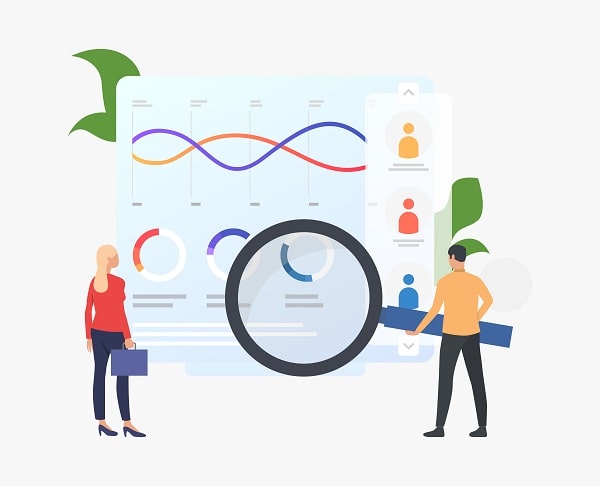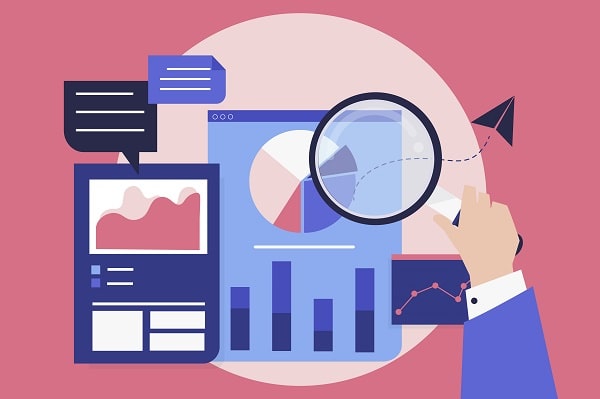Strategic decision-making in a business is a complex exercise that requires an in-depth analysis of the available data, particularly that from survey results. Indeed, surveys provide valuable information about your clients’ and prospects’ expectations, needs, and preferences.
In this article, we will see how analyzing the results can positively influence your company’s strategy by shedding light on the actions to take to improve your offerings, services, and communication.
>> Discover tips for choosing the right survey software, click here

Understanding the Importance of Analyzing Online Survey Results
Online surveys have become a valuable tool for companies wishing to better understand their clients, prospects, and markets. Collecting raw data is not enough; it is essential to thoroughly analyze the obtained results to draw exploitable information.
The Challenges of Data Collection for Your Company
Conducting surveys represents an investment in time and resources for your company. Poorly prepared or poorly targeted data collection risks providing irrelevant or difficult-to-exploit results. It is therefore crucial to precisely define your objectives and the population to survey before starting. The volume and quality of the collected responses will determine the value of your analysis.
The Benefits of an In-Depth Analysis of Responses
A thorough analysis of your survey results will allow you to better understand the expectations and behaviors of your various targets. You will thus be able to better adapt your marketing strategy, product/service offerings, and communication. Detecting trends, strengths, and areas for improvement will help you stand out from the competition and retain your customers. Good exploitation of the collected data is a growth lever not to be overlooked.
Key Steps for Effectively Analyzing Online Survey Results
Once the data is collected, it is essential to rigorously analyze it to draw strategic information. This process is broken down into different essential steps to maximize the value of the results.
Preparation and Planning for Analysis
Before starting the analysis, it is necessary to carefully prepare this phase by defining clear and realistic objectives. Determining key indicators to monitor, data segmentation criteria, and the analysis methodology will allow you to obtain usable results. It is also recommended to allocate the necessary resources (time, skills, tools) to carry out this task.
Exploiting the Collected Data
Data exploitation involves cleaning, sorting, and formatting the data to facilitate its processing. Statistical techniques such as calculating averages, medians, and distributions are applied to reveal trends and findings. Performing cross-tabulations between different variables helps refine the analysis. Graphical visualization of the results in the form of pie charts, histograms, or other representations promotes interpretation.
Summarizing and Presenting the Results
Once the statistical analysis is complete, it is essential to summarize the main results and conclusions in a clear and structured format. This will facilitate the understanding and dissemination of this strategic information within your company.
The summary of the results should highlight the major trends, key figures, and major lessons learned from the data analysis. It is recommended to use visual representations to effectively convey the main messages.

Integrating Your Survey Results into Your Business Strategy
After thoroughly analyzing the results of your surveys, it is essential to integrate them into your overall business strategy. This valuable data will allow you to adjust your offerings, communication, and marketing actions to better meet the expectations of your clients and prospects.
The Impact of Results on Your Product/Service Offering
The information collected on the needs, preferences, and behaviors of your various targets will help you evolve your existing products and services. You will thus be able to adapt and improve them to make them more attractive and competitive. The results may also inspire you to develop new offerings that meet unmet market demands. Your enhanced and updated range will allow you to better acquire and retain your customer base.
Necessary Adjustments in Communication and Marketing
In addition to the impact on your product/service offering, the lessons learned from the surveys will influence your communication strategy and marketing actions. Based on the expectations and motivations expressed by your targets, you will be able to rethink your positioning, key messages, and priority distribution channels. Your communication will thus be more impactful and better aligned with your clients’ aspirations. As for marketing, a detailed analysis of the results will allow you to optimize your campaigns, better target your operations, and improve your ROI.
Mistakes to Avoid When Analyzing Online Survey Results
Even though analyzing survey results is a crucial step, there are certain pitfalls to avoid to ensure the reliability and exploitability of your data. Particular vigilance is required during the examination and interpretation phases.
Biases to Consider
One of the first challenges is to detect and compensate for potential biases that could distort the analysis. Some common biases include sampling bias (if the surveyed population is not representative), social desirability bias (responses influenced by what is perceived as socially acceptable), or non-response bias (related to those who did not participate). It is essential to identify these potential biases and take them into account when interpreting in order to qualify your conclusions.
Pitfalls of Data Interpretation
Beyond biases, interpreting raw data has other risks to avoid. A frequent pitfall is to draw hasty conclusions without sufficiently deepening the analysis. It is therefore essential to cross-reference different variables, properly segment your results, and consider all angles before making recommendations. Making abusive generalizations from a restricted or poorly defined sample is also a mistake to avoid. Finally, not putting the results back into their overall context can lead to erroneous interpretations.
More about surveys:
The dangers of using free form software, click here
Data Protection Measures for Form Software, click here
Tips for Boosting Online Survey Participation, click here
The Impact of Timing on Online Survey Response Rates, click here
The dos and don’ts of designing an effective online form, click here
Ensuring the success of your online survey through pre-testing, click here
How to Add a Survey to Your Website for Better Visitor Insights, click here
Leveraging Online Surveys to Uncover New Market Opportunities, click here
10 Key Ideas to Drastically Improve Participation in Your Digital Forms, click here
Read the article:
Polish – Wpływ analizy badań ankietowych na strategię biznesową, click here
French – L’impact de l’analyse de sondage sur la stratégie d’entreprise, click here
Portuguese – O impacto da análise de pesquisa na estratégia empresarial, click here
German – Die Auswirkungen von Umfrageanalysen auf die Unternehmensstrategie, click here
